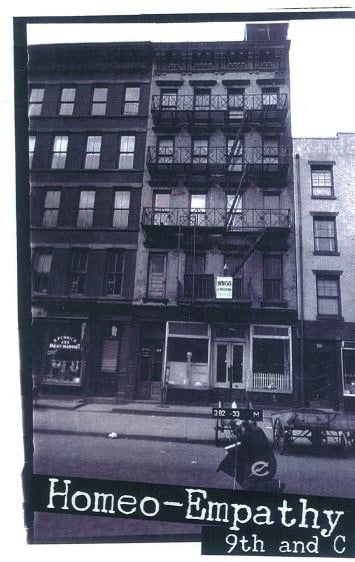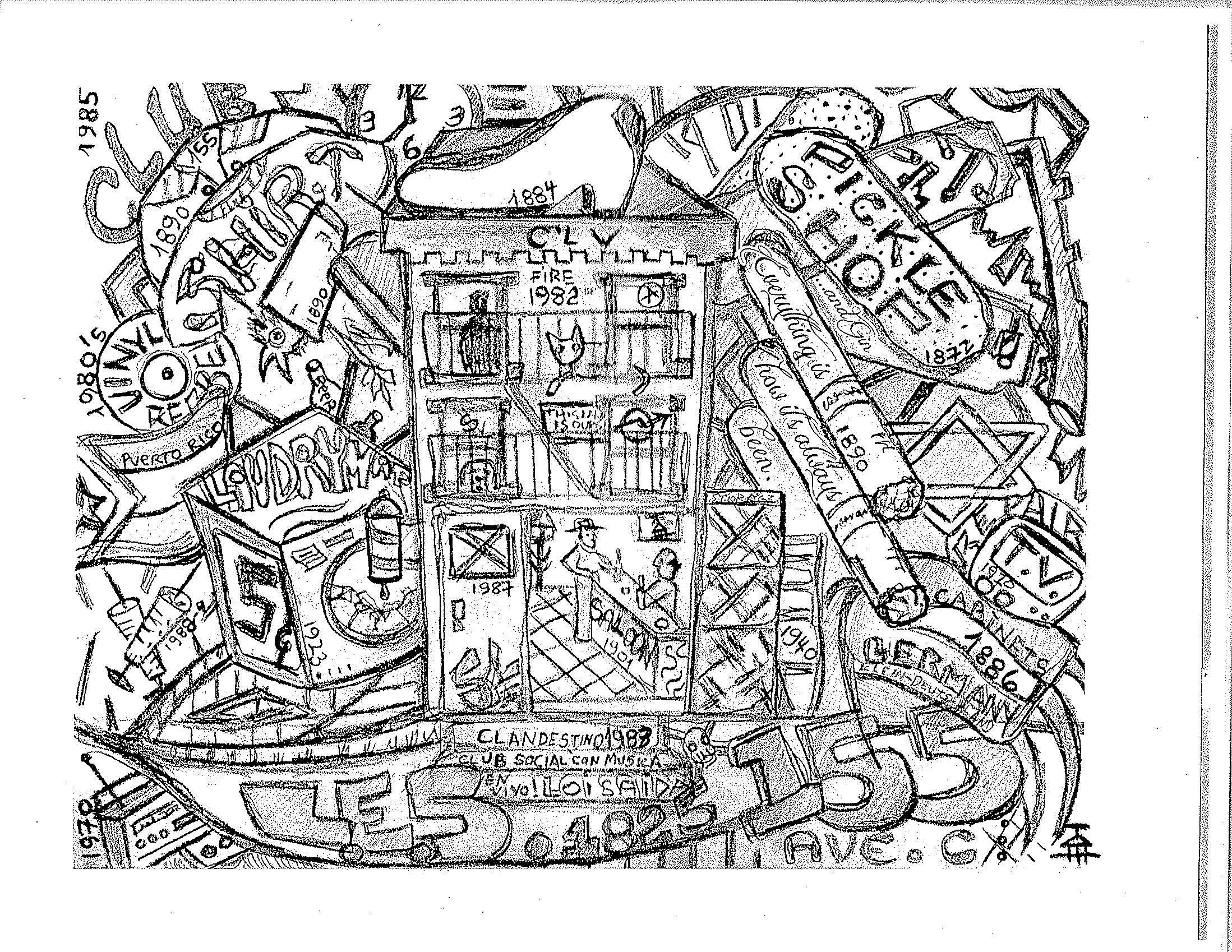Blog Archive
When Your Building is a Museum

A photo of 155 Avenue C taken by the city of New York for tax purposes serves as the cover of Cashman's new book. Photo courtesy of Bill Cashman.
At the Tenement Museum, we think a lot about two particular buildings, 97 Orchard Street and future exhibits at 103 Orchard Street, and its power to hold stories. However, it’s really our building’s ordinariness that makes us stand out as a museum. Hundreds of buildings on the Lower East Side contain stories of families, of businesses, of success and failure, but how does one go about finding the names, images, and narratives that make up the fabric of these ordinary structures? One East Village resident’s, search for everyday history started around the time when his building became a museum.
The Museum of Reclaimed Urban Space opened in 2012 in the ground floor of 155 Avenue C; they focus their exhibitions, events, and walking tours on the rich history of grassroots community spaces on the Lower East Side in the late 20th Century. The building, a residence and performance space that served as a hub of the Lower East Side activist community in the 1980s and 90s, went by the name of C-Squat, owing to its identity as a building that had been reclaimed from the City for residential use. One current tenant, Bill Cashman, decided after a heated conversation with a close friend about the building’s name, to find out about the other stories of the building, those that pre-dated the history addressed at the museum. He embarked on what he thought would be a quick research project about his building’s identity. What resulted, though, was a two-year expedition through archives and articles that led him to find former residents through the mail and track an 1884 Tammany Hall poster on a multi-state journey back to New York City! Bill shares his research in a zine (a self-published booklet) annotated with anecdotes, stories, drawings and photographs, called ‘Homeo-Empathy 9th and C,’ and he starts off with the history of the Lenape in Lower Manhattan.
“I don’t consider myself a historian and I’d never put together something like this,” Bill said, “I started by going to the Municipal Archives.” He discovered that a 5-story tenement had been built on the land in 1872, meant to house 16 families and ‘light business use.’ However, the building hadn’t been constructed to housing code. Though there wasn’t much of a code in those years, there were building depth requirements, so only commercial tenants occupied 155 Avenue C for most of its history. Through the City Register’s record and New York Public Library resources, Bill traced stories of a family Davenport’s fruit and pickle business that went bankrupt, a Jewish-owned shoe store, a shirt factory, a cigar factory, and various workshop lofts that occupied the upper floors. He learned that around the turn of the century, the building housed a bar and union meeting hall (much like 97 Orchard Street’s basement saloon!). In newspapers, Bill found dozens of meeting announcements, for everything from the Groceries Association in 1909 to the Workmen’s Circle in 1915, as well as evidence of an (illegal) pool hall in the lower level! He also searched through the Department of Buildings records, uncovering a document that reported unsafe conditions in 155 Avenue C which lead to the closure of the upper floors to any occupants in 1935, the same year that 97 Orchard Street closed to residents.
The space’s history as C-Squat began in 1989, but the paper trail thinned out during the middle of the 20th Century. Instead of leaving gaps in his story, Bill chose to write letters to people whose names had appeared on residents’ lists. Two hours after Bill had dropped four letters into the mailbox, he returned back to his home at 155 to find an older man standing outside. The man introduced himself as Allen Furbert, and he turned out to be one of the people to whom Bill had written! Allen, an immigrant from Bermuda who had long since moved uptown, had made his first home in the United States at 155 Avenue C and was visiting because he missed his brother Lance, with whom he had shared an apartment there. He showed Bill around, recounting tales of the Puerto Rican superintendent and the building’s life as an impromptu party venue, and remembered the landlord cutting back on heat and hot water in the 1970s. A few months after mailing the letters, Bill also heard from Rena, a woman whose husband had lived in the building in the late 1960s and who remembered $80 rents and disliking her husband’s taste in apartment décor. Neither Allen nor Rena remembered the building being taken over by the city in 1978. After the City claimed it, the history could best be tracked by meeting people and talking, which Bill did a lot of, unearthing dozens of details and anecdotes about the building’s start as a reclaimed living space.
As he puzzled out the various threads of 155 Avenue C’s 20th Century history, the present day building had become a relief center during Hurricane Sandy, a spot where neighbors could gather for a meal or some company. For Bill, seeing the community in action led him to reflect back on a conversation with a friend from the start of his project. The friend had noted how this building had had a million different overlapping lives, all created by the individuals who had lived there. No version of the building’s history was the definite version, none of the stories were more right than others. In his work, Bill ultimately reveals this power of shared history and constructs previously untold tales of his building, neighborhood, and city. And while his residence does happen to be a museum, any residence will reveal history if we listen closely enough.
–Posted by Kathryn Lloyd, Education Associate
